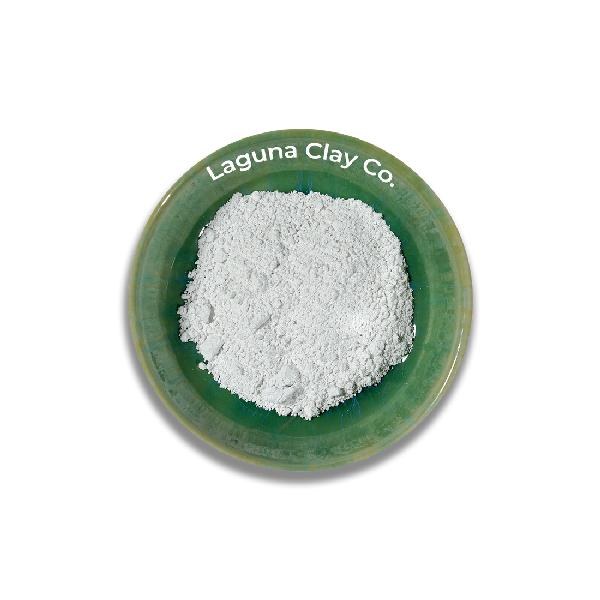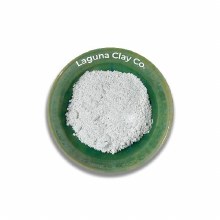Silica (325 Mesh), Sil-Co-Sil 53 (50# Bag)
| Qty: | Unit Price per LB: |
|---|---|
| 5 | $1.46 |
| 10 | $1.30 |
| 50 | $0.98 |
| 100 | $0.81 |
Item#: 57325
MPN: MSIL325
Description: Quartz, Flint
- Full bag is 50 lbs
- Also known as flint.
- Most common source of silica in clay bodies and glazes. Increases thermal expan_sion in clays, decreases in glazes. Can also raise melting point in glaze.
- Product identifier: Silica Sand, Ground Silica, and Fine Ground Silica
The term 'silica' can be misleading. It is important to understand the difference between 'silica mineral', 'silicates', and 'silica glass'. Quartz is the best example of a natural mineral that is almost pure silicon dioxide (it is the most abundant mineral on planet earth). Other ceramic minerals like feldspar and clay contain some 'free silica' (accessory quartz). However these also usually contain 'silicates', that is, SiO2 chemically combined with other oxides to form crystalline minerals. Other silica-containing rocks and minerals are andalusite, barite, beach sand, bentonite, calcite, diatomaceous earth, kaolin, limestone, mica, pyrophyllite, talc, tripoli, rutile, wollastonite, zeolite, zirconium sand, vermiculite, granite, and sandstone. Silica is also available as a silicate glass (in frits).
Pure silica minerals (like quartz) have high melting points. In ceramic bodies and glazes other oxides are added to complement it, they form silicates with it or occupy the network between particles of quartz. In the latter case silica is considered a 'filler' (e.g. porcelain clay bodies). Interestingly, some special purpose (and expensive) clay bodies replace the silica filler with calcined alumina, this increases body strength and reduces thermal expansion.
Individual particles of quartz have a high thermal expansion (and associated contraction) and significantly change their volume as they pass up and down through 'inversion' temperature points during firing. This can cause a form of body cracking called 'dunting' (because only some of the silica gets dissolved in the feldspar glass melt). The cracking occurs as micro-cracks radiate out from each microscopic particle of quartz and propagate into larger cracks. High quartz bodies are usually unsuitable for ovenware and ware that must tolerate sudden temperature changes. However, this behaviour is advantageous to glaze fit since it puts the 'squeeze' on the glaze to prevent crazing. At the same time, silica in glazes tends to dissolve and form low-expansion silicates that reduce glaze expansion and also prevent crazing. In both cases, silica powder of small grain size is advantageous. Sanitaryware producers use finer grades of silica (and lower percentages) in the body to minimize issues with quartz inversion.
While it is convenient to think that quartz particles dissolve in the glaze melt to combine with other oxides to produce silicates reality can be quite different. As noted, quartz particles do not melt at any common ceramic temperatures, they must be dissolved into the melt by other things that have already melted. The completeness of this depends on particle size, time, temperature and fluidity and nature of the melt. Potters, who fire slowly and at high temperatures, are least affected by this issue (those firing low and fast most affected). Thus, in industry, where fast-firing is the norm, silica-containing glazes must be ball-milled. Sourcing SiO2 to the glass from frits or raw materials that release it more easily (like feldspar, wollastonite, pyrophyllite) is also help. Thus, a typical high-temperature stoneware glaze for potters might have 30% silica whereas a fast-fire industrial glaze might have none. If you are a potter and one of your glazes has 30% silica, you really should be ball milling it or using 325 mesh silica. For low temperatures, these principles are even more important.
High-temperature traditional ceramic bodies tend to have up to 30% silica whereas low-fire ones have much less or none (because of its refractory nature). However, in recent years many companies substitute kyanite, pyrophyllite or similar minerals for part of the quartz to minimize thermal expansion (see article in Studio Potter vol 28 #1 by Peter Sohngen). Very fine grades of silica aid in cristobalite formation in stoneware bodies (cristobalite is a form of silica that goes through it's inversion at about 200C).
When limestone and silica are available in a body they can react to form wollastonite. This adds mechanical strength and is exploited in tile bodies. For optimal results, the relative percentages must be in balance and the forming and firing methods tuned to optimize the effect.
High-temperature glazes can have 40% or more silica (if enough flux is available to react and form silicates).
Microfine silica grades have particle sizes less than 1 micron, this is far finer than any ceramic grade of silica (45 microns are larger). These fine grades are, for example, used in the refractories industry to fill voids in between other particles to increase density and lower the amount of water needed.




Share:
Share on Facebook Share on Twitter Share on Pinterest Tell a friend